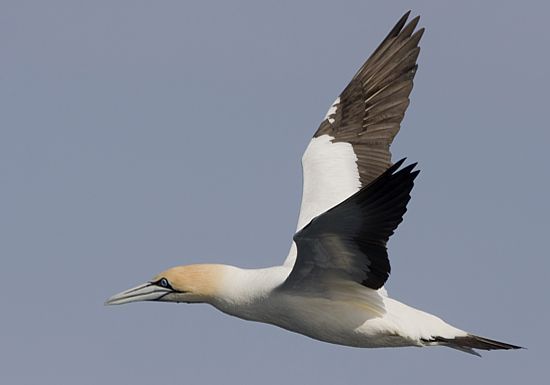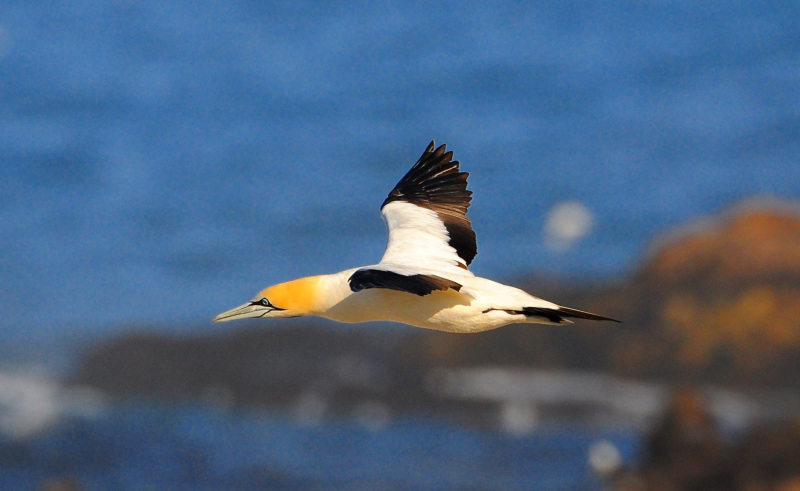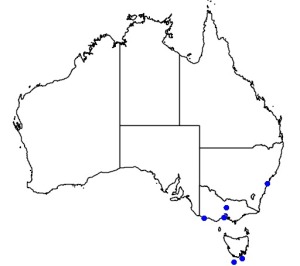Colours
Distinguishing features
They are easily identified by their large size, black and white plumage and distinctive yellow crown and hindneck. The pale blue bill is pointed with fine serrations near the tip.
When seen in flight the snow-white body with the black tail, primaries and secondaries, and dark bill makes them easy to identify. At closer range the distinctive golden crown and nape, which gradually becomes white on the neck, is noticeable. Juveniles and Immatures are dark brown with a pale bill, and can resemble the dark-coloured Boobies at first glance. (Wikipedia)
Size
- From 84 cm to 94 cm (Length of specimen)
Wingspan
- From 171 cm to 185 cm
Synonyms
Similar taxa
-
Animalia:
Australasian Gannet (species: Morus serrator)
The Cape Gannet is identified from the Australasian Gannet by the all-black tail, a longer black stripe down the throat (from underneath the beak) and more extensive black on the face, but all of these features are difficult to identify unless at close proximity. (Wikipedia)
Distribution
Distribution and habitat preferences
The breeding range is restricted to southern Africa in three islands off Namibia and three islands off South Africa. They normally nest in large and dense colonies on flat islands or on flat ledges of the steeply sloping Mercury Island off Namibia.
Several birds have occasionally been found breeding on offshore Australian islands, together with Australasian Gannets, although the Cape species is never represented by more than a few pairs.
The non-breeding range extends from the coastal waters off the Gulf of Guinea on the west coast of Africa, to Mozambique on the east coast. They seldom occur farther offshore than 100 km, though records of birds more than 200 km offshore exist for both the Atlantic and Indian Oceans. (Wikipedia)
Diet
They are powerful fliers, using mainly a flap-gliding technique, which is more energy consuming than the dynamic-soaring favoured by albatrosses. As all Sulids, they are fish-eating birds that plunge-dive from considerable height. (Wikipedia)



